This is the second part of the Black Prince series. The previous part was Marmite Prince.
If you haven’t played Blue Prince, it probably sounds like a game about a really big house called Mt. Holly. There’s no deception here, it actually is a game about a really big house called Mt. Holly.
But there is so much Mora in Blue Prince than this house.
Spoiler Level: MAJOR (Mainly Story)
Where does it start? It probably starts earlier than you think but for me it was the Chapel. The Chapel is not just a common room but a red room – every red room has a negative attribute and in the Chapel you are forced to pay a coin when passing through. Red being a negative signifier has more meaning than the first-time player would guess; the obvious but wrong conclusion is that red equals danger.
Naturally, I didn’t start wondering about the story relevance of the colour red, but the figures depicted in the Chapel’s stained glass windows correlated with nothing I recognised. They also seemed vaguely comical. One wore a chef’s hat, one looked like a maid and another was dressed as a huntsman. What were these? The patron saints of various job types?
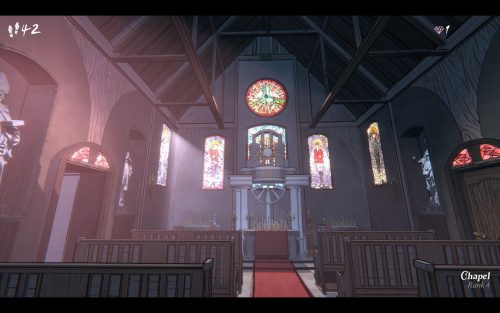
Much later I discovered they form an entire in-game pantheon and there’s only one time, deep in the game, where they’re actually all mentioned together. And in fact that moment turns out to be a test of whether you have identified each of their names.
This is how the story of Blue Prince works. Fragments here and there, almost like an afterthought, asking you to put it together on your own time. It avoids direct exposition except when giving away last resort hints, of which there are a fair few. It’s a game for people who like puzzles and cryptic crosswords and optimizing roguelike combat so it also expects more of the player when it comes to storytelling. I wouldn’t say it was show-don’t-tell but more show-through-layer-of-concrete-don’t-tell. Read the tea leaves not to divine the future, but to divine the past. And in time, you realise that while you will never die in Blue Prince, it is eminently possible that our protagonist, Simon, will not prosper as a result of the dangerous secrets buried in Mt. Holly.
Something that isn’t a dangerous secret is the exquisite surreality of the drafting mechanic, which Blue Prince doesn’t explain but acknowledges as a real thing in the Mt. Hollyverse. At first, you might think the game is being cute inserting some tips into the lore like how some games might have a burly sergeant bark at you to test your left mouse button to fire a weapon. Really, Sarge? Do you have a left mouse button too?
But people talk seriously about step counting and removing critical blueprints from the draft pool. We also know not every house works in this way because Kimberley Thompson, a new lab technician at the estate, does not understand how anyone could function in a house like this. And room drafting is obviously significant enough to create an entire periodical published by Corarica University.
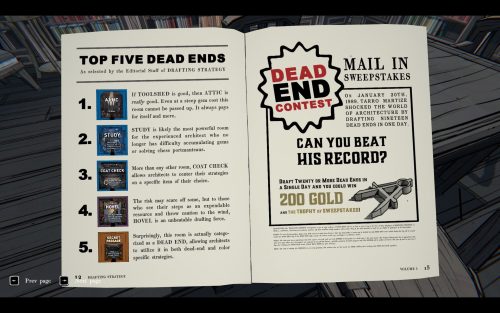
And there I go, name-dropping Corarica and getting ahead of myself again. Slow it down. Some deep breaths. Good. If there’s one thing we can all agree on it is that Blue Prince is slooooowwwwwburrrrnnnnn amirite
Okay, I need to lay my cards on the table. Books not cards, to be precise. I was a library boy.
I’ve been following Joseph Mansfield’s Let’s Play series and during his early days he treated the library as less than important, almost to the point of disrespect. Me? I was all over the library. Draft it baby! This is a magical hall of words in a game that eschews exposition.
The first book I read was ‘The History of Orindia’ and that coloured (ho ho) my entire experience. Mt. Holly was located in Fenn Aries, originally known as Orinda Aires, but a brutal civil war ended with the overthrow of the Orindian royalty. And there it is: it’s not just a fictional house. It’s a fictional land. With a fictional history.
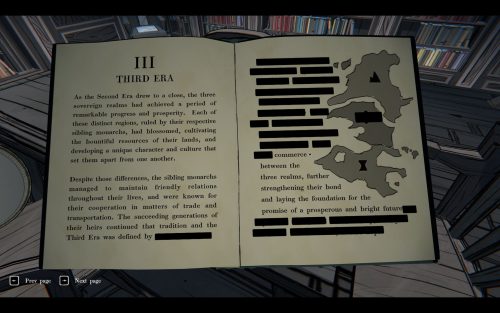
I’m not a fan of giant backstories because I find them tedious most of the time, like how there’s a five-paragraph description of your weapon in the inventory explaining how Goddam’It IV cultivated neuroflowers which led to the invention of the first tumour pistol to turn the tide in the revolt of the— yeah, thrilling. I didn’t know if anything in this book was particularly important, but huge parts of it were censored. It’s the designer as conman. If Blue Prince just came out and backstoried me in the face, I wouldn’t care for it, but because it was keeping something from me, I was determined to find out the truth.
What could be so corrupting about a simple history book? One thing I did learn, even though much of the text was censored, was that Orinda Aires was represented by the colour black and Fenn Aires… red. I am awakened by the sound of the penny dropping, said Alzara. And I could just about discern the Orinda Aires sigil, also censored. This meant I sat the fuck up when I unlocked the mysterious metal elevator in front of the house (a clear homage to that booby-prize elevator in The Witness) because it had the illegal Orinda Aires sigil baked into its frame. Holy shit, I thought, now we’re cooking.
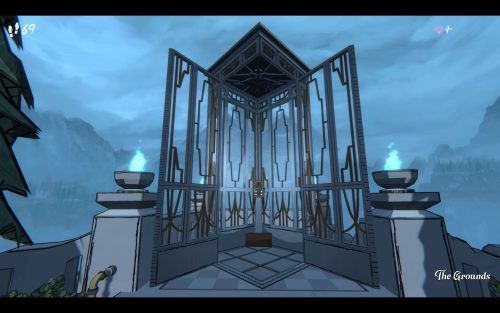
It’s difficult not to just go on and on about the moments when different parts come together and a sudden story revelation jolts your brain. I gotta tell you, this is the juice, right here. I can’t stop now.
At some point, you will come across the family tree in the Root Cellar, a place that is notable for asking the player to dig a lot, to unearth what lies buried. Is this metaphor on the nose?
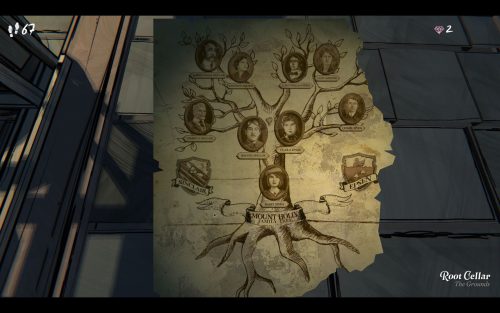
I spotted one detail immediately. And if you look closely, you might see it too. The spot above and to the right of your grandmother Clara Epsen is torn off. Now, I’m not sure anything was on the lost fragment but there’s an implication that we’re missing something. Immediately seeing this I theorised that somehow the Epsen side of the family harboured the exiled royal bloodline. It takes fucking years to find the smoking gun here and it’s encrypted in a made-up language, hidden in a secret room which correlates with a newspaper clipping that can only be found if you dig in the correct spot in the house, as identified in the Aquarium if you drain it first.
Now, I have some sad news to import. I got real close to revealing the truth but didn’t actually figure it out.
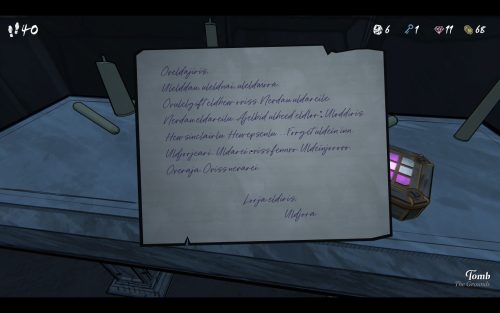
I translated most of the note into English but a few phrases were unclear to me. The critical word I needed to translate was ‘jeari’. Turns out it wasn’t a word at all, but a name. Long story short, that was the connection I was looking for. Simon has Orindian royal blood; he is the Black Prince.
Wait – oh my God, I’m so, so sorry. I referenced the in-game language of Erajan which is way down the line, revealed only in the eighth classroom. We need to talk about the fourth classroom before that, because that was a freaking mind fritzer.
You can draft classrooms at Mt. Holly and each one you draft in the same day is a different school grade – or really, a different subject. Grade 4 is Geography which reveals they didn’t just make a fictional place, they didn’t just make a fictional country – they made a whole fictional planet and solar system. This isn’t Earth, it’s Mora. It isn’t even our sun in their sky.
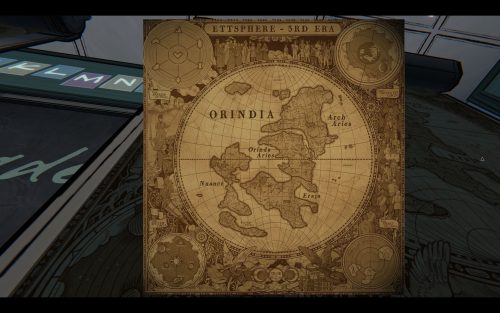
And while we’re talking classrooms, Blue Prince even invented it’s own arithmetical symbology that involves colours (so you’re probably categorised as disabled if you’re colour blind). Jesus, I could just imagine Blue Prince making it’s own literary system that looked like IP addresses. “Yes, of course it makes sense that we index newspapers with the well-known APWL Article-Paragraph-Word-Letter system. It’s extremely useful to have references like 1.3.5.4 that identifies the letter ‘S’.” Oh God, I’ve probably given Blue Prince creator Tonda Ros a new idea for the final game patch we’re all waiting for. Please, let us not speak of “numerical cores”.
So, sure, after I finished every book in the library and the bookshop magically popped into existence with new books to read, do you think I rushed to Room 46? You bet your shit, I didn’t.
And there always seemed to be a little bit of background just out of reach. Why is the game called Blue Prince when you’re the Black Prince? This is especially funny as I originally theorised this was a story about feuding brothers – a “Red Prince” versus a “Blue Prince” – based on ridiculously little evidence, a testament to how much fiction a player can concoct out of thin air.
So, it’s the “Blue” Prince because– ah, the sun is sinking beneath the horizon and my step count is running low. Let’s call it a day. It’s unlikely I’ll draft the title Mora Amore again for the next chapter of our Blue Prince journey so we’ll be forced to chat about something else. It’s more likely I’ll draft–
Next: Door Chore
Download my FREE eBook on the collapse of indie game prices an accessible and comprehensive explanation of what has happened to the market.
Sign up for the monthly Electron Dance Newsletter and follow on Twitter!

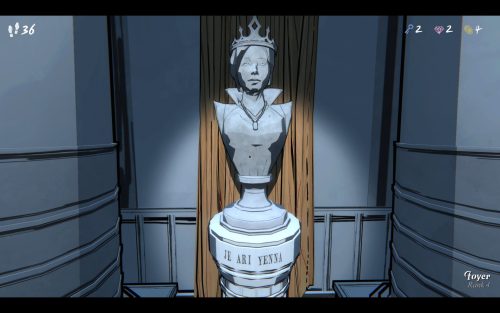
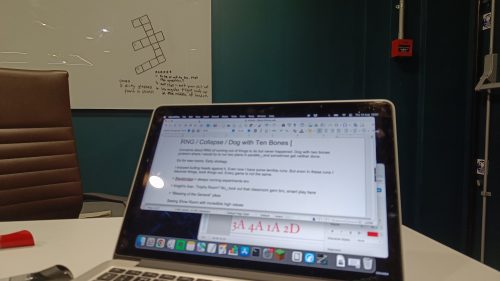
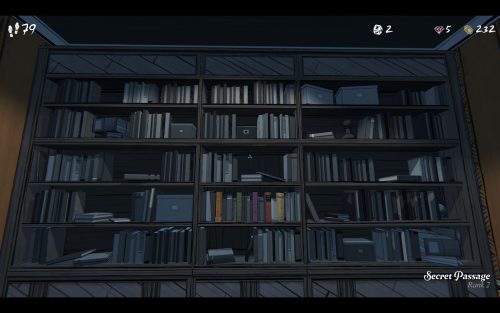
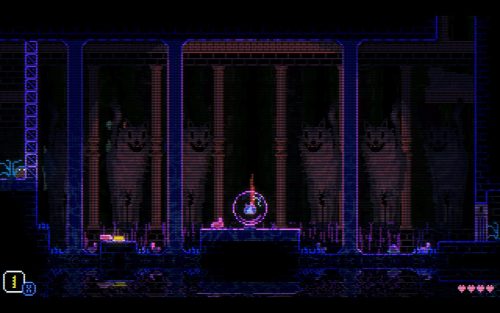
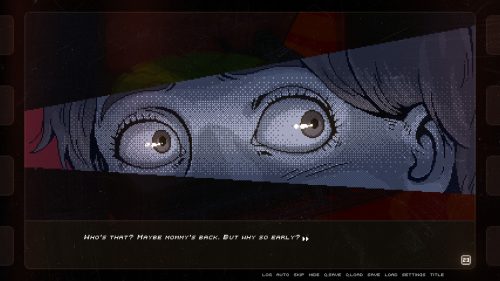
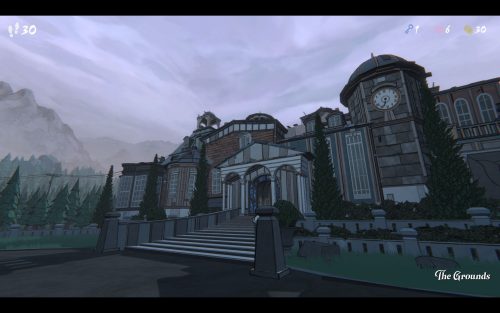
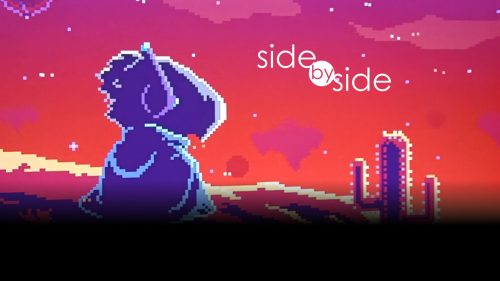
In that last screenshot, I wanted to share a snapshot of one of my Black Prince work in progress documents, but it’s out of focus for some reason. If anyone is squinting to read it, I’ll save you the time:
RNG / Collapse / Dog with Ten Bones [
Concerns about RNG of running out of things to do but never happened. Dog with two bones problem where I would try to run two plans in parallel – and sometimes get neither done.
Go for new rooms. Early strategy.
I enjoyed butting heads against it. Even now I have some terrible runs. But even in these runs I discover things, work things out. Every game is not the same.
> Blackbridge-> always running experiments bro
> Knight’s Axe– Trophy Room? No took out that classroom gem bro, smart play here
> “Blessing of the General” yikes
Seeing Show Room with incredible high values
Ah well, give it a good wringing out, that should sort it.
So far it sounds a bit like someone bred Dark Souls lore with the falling backwards trust exercise, if in said exercise there was nobody there to catch you, because the designer realised that some people would find a painful landing a really meaningful experience and would be prepared to extol its virtues with zeal to passersby.
(I can’t lie, though; I’m v. intrigued already.)
I’m tempted to draw comparisons with a game I’m playing (Virtue’s Last Reward), which in some ways is similar – presenting the player with layer upon layer of mysteries, requiring multiple playthroughs to piece everything together – but which structurally seems quite different (for one thing, the narrative has branch points, but is otherwise essentially linear).
I haven’t finished VLR yet, but if it’s like the previous game in the series, I expect its revelations will be explicit in way that would make it difficult for any player to be left behind, provided they’re persistent enough to push down every branch of the decision tree. The fun of the mysteries is really in that enough hints are given to allow a dedicated player to work out key revelations ahead of time. You don’t have to keep notes, but it makes you want to.
This seems to be a key difference with Blue Prince – a game which is comfortable with the idea that some people will come away feeling they never found the most significant revelations (and that perhaps nobody will come away feeling they found everything).
the worldbuilding—i suppose i can call it that if i am being generous—in blue prince is terrible. some of it i rather liked, such as the conceit that room drafting was just a thing in this world—until in later volumes of the aforementioned periodical, while maintaining its tone of generality, it starts talking about rooms that can only ever have existed in this house specifically: the most egregious of which is probably Her Ladyship’s Chamber (the description of which even mentions Clara Epsen by name).
i am all for inventing a fictional setting that lampshades the game mechanics. but if you cant keep that fiction consistent with itself, even after giving yourself that bountiful license, then what are you even going to all the effort for?
the fictional astronomy becomes even worse. in one corner of the fourth grade classroom map is a diagram of the planet Mora and its two moons: with an annotation that the larger of the two—”The Devoted Moon”, which is responsible for the crescent part of the ubiquitous moon symbol—has an orbital period of 24 hours. neat! but wait, so the cultures on this planet would never have developed a lunar calendar, let alone one that precisely matches the gregorian calendar of our own universe. so then how exactly the fuck do all these letters have dates in the gregorian calendar—dates that are extremely significant for various puzzles throughout the house?!
its not that i object to paper-thin worldbuilding. in a puzzle game you have every excuse for that in the first place. its just… dont do paper-thin worldbuilding and then try to write deeper lore that contradicts everything you already wrote. make up your mind!
because it couldnt commit to either handwaving or worldbuilding, it all ended up very unsatisfying to me.
(and thats without even starting to get into the naive and insipid portrayal of all the characters. ugh!)
Tantusar
A wise remark!
CA
I know Blue Prince isn’t the first game on the block to do the whole story-as-confetti approach. But it’s not as thin as, say, Dark Souls, because it’s quite forward about simple things like the bequest and so forth. But piecing together some of the weirder aspects of the house and details of the world can be hard work – yet satisfying for a puzzley mind. Still, in part four, I’m going to come back to what I find problematic about Blue Prince’s implementation. But I accept that some people are just not going the figure out a ton of stuff – like one of the central mysteries is what happened to your mother. And how many people would ever discover the revelation in the insane “third layer” without guides I do not know (and we’re going to get into that can of worms in part five).
Oh boy, I’ve had the Zero Escape trilogy in my Steam account for over five years. I’ve been very interested in getting into it ever since Amanda Lange sold me on Virtue’s Last Reward way back when.
Oohhh and I will be talking about Blue Prince note-taking in part four. This is an important part of my rants to come.
vfig
The term ‘lampshading’ was in my mind but I decided not to use it, because drafting is fused into the story in several places – it’s quite important around the Safehouse, and the ‘upsetting’ discovery of a particular blackprint during the excavations. But you’re right; I think they wanted to go all out on the worldbuilding but it’s over-ambitious.
It gets unstuck in all sorts of ways. I mean, one of the puzzles involves Christmas – there’s no Jesus Christ in this world! The periodicals are also highly Mt. Holly specific. And a lot is made of the sigils which boils whole regions into particular climates/cultures which is very Star Trek beaming down to a planet and treating the entire population as one. I know they make an attempt to say the sigils are just like a snapshot of smaller cultures but I could still not quite buy into it.
In time, I also lost the ability to see the puzzles as part of the Mt. Holly masterwork but inevitably just a developer putting in cool stuff, because it’s hard to see how some of the puzzles integrated into what we know about the Mt. Holly.
(We’ll get into the people in the story in part five.)
Story as confetti – very good!
Per your other comment on the Witness, perhaps we can trace this approach back to the classic first person FMV adventures, to Myst and its stablemates? Environmental storytelling being a natural consquence of the environments themselves being so foregrounded in those games.
I tried out Riven for Thinky Games and while I was intrigued, I just got mercilessly stuck 🙂 I’d opened up a lot of areas but had no idea what I was supposed to do next. Maybe John Walker was right!?!!?
That’s a good observation that maybe Myst & co brought this style to the fore. But there’s even attempts going back further – Alternate Reality in the 80s had a chunk of this as well as Mercenary. Probably others too that I’m just not aware of, but we were all in danger of reading far more into minimalist videogames back then as we played smaller games for much longer than we do now.
Regarding a Red/Blue Prince conflict and a possible sibling rivalry, the game definitely throws you some … red herrings at the start
[spoilers]
Such as having the protagonist share a name with his grandfather, who happened to have a brother that he had some friction with
And along those lines Zara – what’s up with that SHS and HSS bullshit? I’ve only just twigged as well that having two people in the story called Simon was a deliberate ploy to confuse the players when writers are strongly recommended not to have multiple characters share names.
no idea. sigur rós thought it would be a fun challenge for the player?
I agree the worldbuilding doesn’t quite “work”; it’s clear the designer was a puzzle expert first and a narrative and lore expert not at all. But I did appreciate how the game spoonfeeds you little pieces of this world and makes you care about them because you then need to know that information to solve a particular puzzle.
It’s not as narratively satisfying as knowing the backstory of a faction in Dune (which is intrinsically rewarding because those are generally interesting), but it is quite fun to have learned what the climate of Corarica or Arch Aries is like. Had all the puzzles been purely limited to the house, the game would have felt small. But it branches crazily out to all these extra places, so the house feels like it sits on this infinitely dense informational black hole at the centre of this fictional universe.
James, you cannot imagine how much I kept wondering whether we’d end up leaving there house to visit the larger world. It felt so tangible, just beyond the gates and walls.